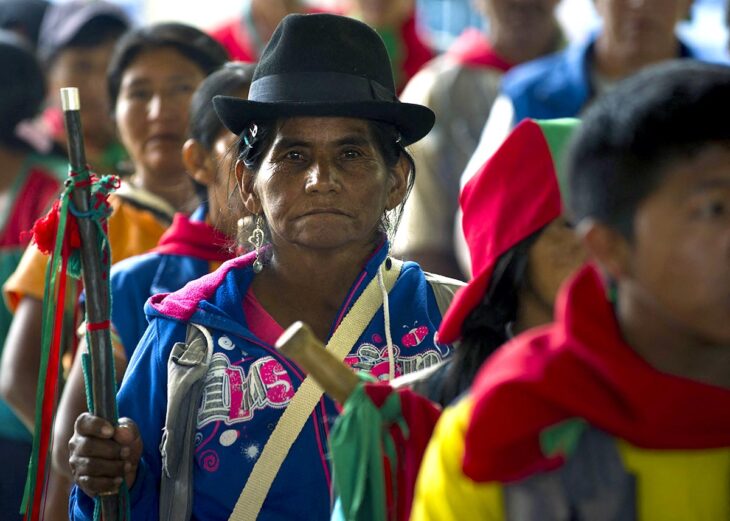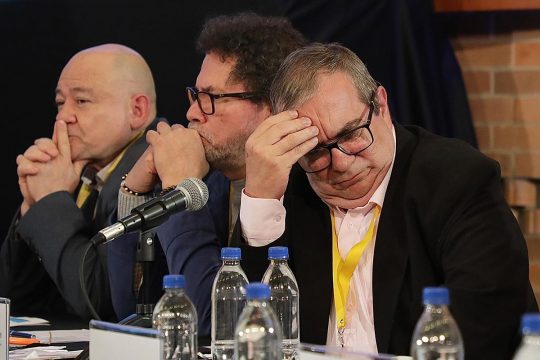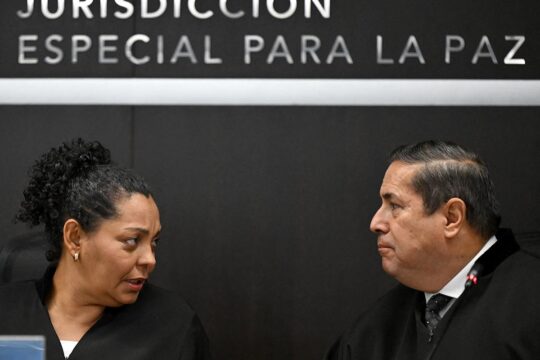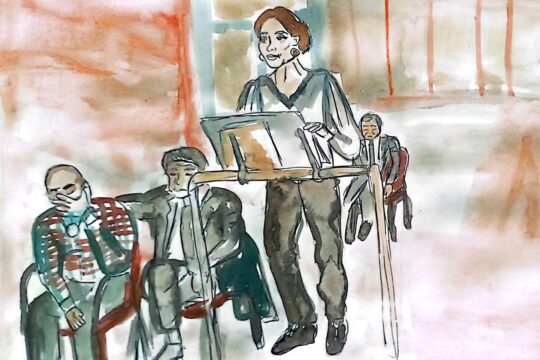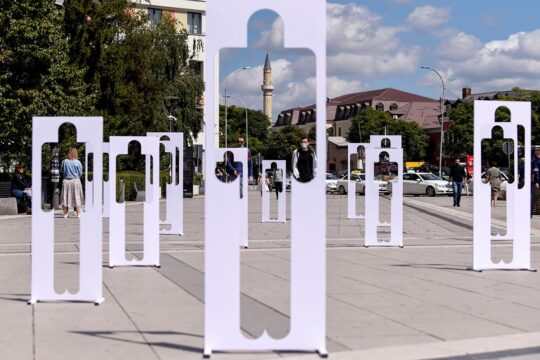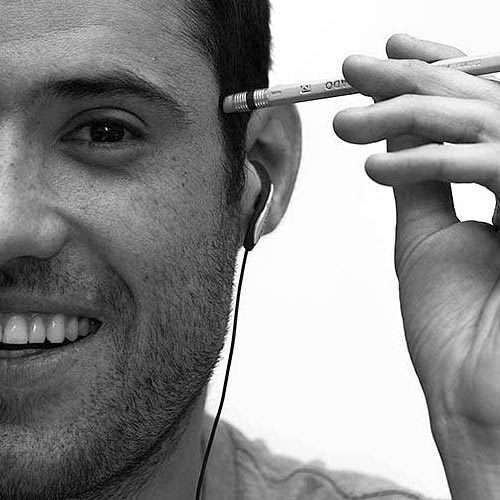On March 8, the Special Jurisdiction for Peace (JEP) unveiled its fifth indictment in five years of work. Its accusation against 10 regional commanders of the former Revolutionary Armed Forces of Colombia (FARC) for committing 14 war crimes and crimes against humanity, the two charges of highest international reproach, marked several milestones for the special tribunal stemming from the 2016 peace agreement.
After charging seven members of the FARC leadership two years ago over thousands of kidnappings (and seeing them accept responsibility), it is the first time the JEP has gone down the chain of command of that rebel group and tried to prove the responsibility of leaders who operated at the local level. It is also the first tangible result in one of the cases in which it decided not to focus its judicial investigation on a specific crime, but rather on a geographic region. And it is also the first time that, instead of examining an entire universe of victims, it chose to put the magnifying glass on how thousands of people belonging to two ethnic minorities - indigenous and Afro-descendants - suffered what it called "a regime of terror" by the guerrillas who laid down their arms six years ago.
"Every life project was cut short and the different documented crimes (...) had as a common thread a viciousness and profiling against indigenous and Afro-Colombian citizens," judge Raúl Sanchez wrote in his decision.
A bellwether for regional cases
'Case 05' is one of the first seven macro-cases opened by the judicial arm of Colombia’s transitional justice and one of three that focus on crimes committed by multiple actors, including FARC but also law enforcement agents and third parties, in specific regions of the country. Its focus is on 17 municipalities in Cauca and Valle del Cauca, two neighbouring departments in the southwest, where the Andes mountains meets the Pacific lowlands, between 1993 and 2016.
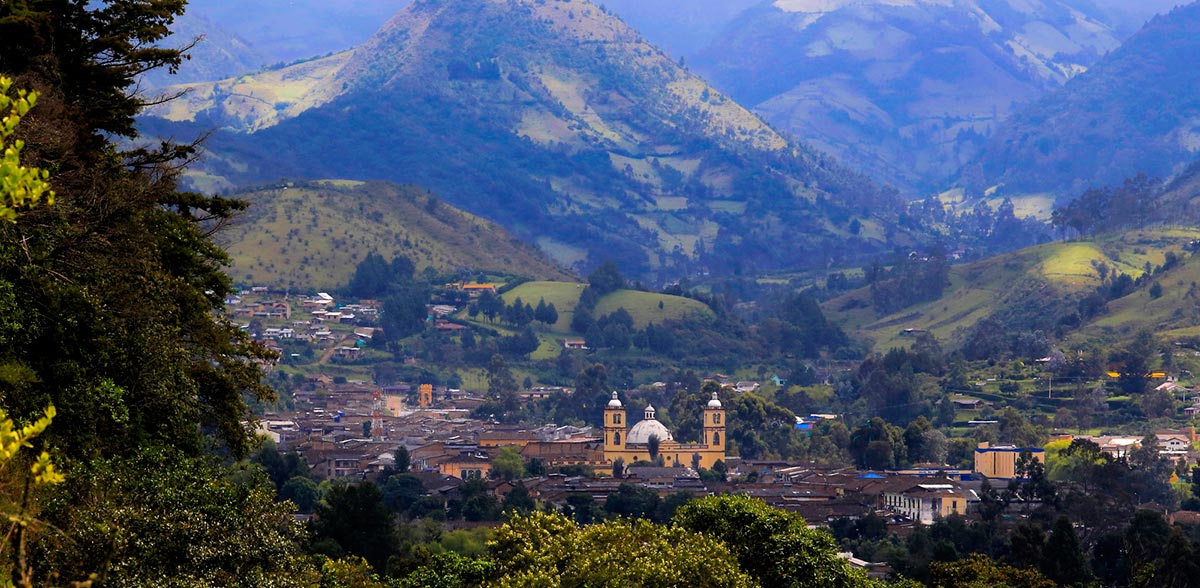
This investigative methodology was the result of a long internal debate in the JEP and especially in its Recognition Chamber, the one in charge of building and presenting cases, on how to select what and whom to investigate, try and sanction. From the outset, the peace agreement set a double criterion for the transitional justice system to demarcate its work in a country with 9.4 million victims: on the one hand, it should focus on the most serious and representative crimes and, on the other, on those most responsible for committing them. The JEP’s justices chose to fulfill this mission through two selection methods: a more orthodox one based on specific crimes, as in the cases of FARC kidnappings and extrajudicial executions committed by the military, and a more innovative one focusing on specific regions.
"Territorial and social control"
In this first decision of its inaugural regional case, the JEP charged 10 former commanders of two structures that operated in that area, the Jacobo Arenas and Gabriel Galvis Mobile Columns, with having committed eight war crimes and six crimes against humanity. Among them is the first woman charged so far by the tribunal, Gloria Patricia Ramírez, alias 'Lady'.
The JEP found that they savaged the region's inhabitants as part of their plan to dominate the Pacific region and take over cities like Popayán or Cali, the country's third largest, while using the rugged neighbouring mountains as a rear-guard. The ultimate goal of these crimes, the JEP argues, was to "obtain and consolidate territorial and social control" of municipalities they considered a strategic corridor.
The accused now have 30 days to choose which path they take in Colombia's two-track transitional justice system. If they accept the tribunal’s findings and own up to their responsibility, in addition to contributing to the truth and personally redressing victims, they may receive 5-to-8 sentences in a non-prison setting. If they reject them, their case would move to an adversarial model and, if convicted, face 15-to-20-year prison sentences.
The 683-page decision is an encyclopaedic compendium of crimes suffered by the inhabitants of these 17 towns, from selective homicides and child recruitment to entire communities confined and people maimed by landmines. It is a text written in a dry and factual language, often limited to naming the victims by their initials, and far from the eloquent and sometimes emotional prose with which previous indictments recounted the horrors of kidnapping and false positives.
"A regime of terror against ancestral settlers"
Although the delimitation of this case is in theory geographical, in practice it also ended up putting a spotlight on a certain profile of victims due to the fact that it’s one of the corners of Colombia with the greatest presence of ethnic minorities. To the point that in two towns, Toribío and Jambaló, more than 95% of the population is indigenous and in Puerto Tejada 97% is Afro-Colombian. This meant that much of the JEP’s investigative work reconstructs the atrocities perpetrated by the guerrillas against nine indigenous peoples, mostly settled in the mountains, and dozens of Afro communities, descendants of slaves brought by the Spaniards from Africa in the 16th century to mine gold and silver.
"Under the idea of consolidating a strategic corridor that would allow them to control the south of the country and then make the great leap to power in all of Colombia, the FARC-EP established a regime of terror that put the ancestral inhabitants in the dead end of being at the centre of a conflict with various actors and intensities," the accusation says. It’s an assessment that the numbers corroborate: indigenous and black persons, who have special constitutional protection and their own chapter in the peace agreement, make up a tenth of Colombia’s population but account for almost a fifth of victims of the armed conflict.
To illustrate this regime of terror, the JEP identified the patterns behind certain crimes. With dozens of examples, it shows that FARC committed selective killings against three types of persons: those it accused of being police or military informants, those it considered its enemies, and leaders who were critical of the guerrillas or, in its words, "sowed hatred" and "promoted a confrontational spirit." For example, in 2011 they killed Leopoldina Valencia, a 70-year-old traditional Nasa doctor, after accusing her of performing witchcraft on their militiamen. The murder of traditional leaders and authorities, says the tribunal, aimed at "altering their spiritual, political and cultural equilibrium". It also details how the guerrillas affected the daily life of hundreds of communities, setting up camps in their territories without their traditional authorities’ permission, infiltrating their organizations to destabilize them or imposing curfews.
The enormous number of accredited victims in the case, 180,000, reflects this level of victimization, but also the JEP's decision to allow them to do so as collective subjects, instead of individually as in other cases. Although she is not mentioned by name, one of these Afro communities - that of La Toma - is that where current vice-president Francia Márquez, who was a respected environmental and victims' leader and won the Goldman prize before entering electoral politics, hails from.
Villages under siege
This new indictment focuses on crimes that lacerated the lives of the smallest and most rural villages. Among these, it gives a leading role to guerrilla attacks and sieges, which lasted anywhere from a few hours to several days and left engraved in the Colombian imagination the desolate images of collapsed squares and house facades dotted by gunfire. Cauca alone accounted for 309 of the 600 attacks of this type recorded.
FARC's most frequent goal was to destroy police stations or bank offices, although - as several guerrillas admitted to the tribunal - they were often fortified. This meant that civilians, almost always exposed, ended up bearing the human cost. A bicycle bomb in Pradera injured 14 children celebrating Halloween. A public transport 'chiva' bus loaded with 100 kilos of explosives left two dead, 100 wounded and 400 houses damaged in Toribío on a market day. A dump truck with explosive cylinders left 183 injured in Morales after the driver left it next to a house and fled.
They frequently devastated civilian property, from houses, hospitals and churches to energy, water or telephone public infrastructure. An attack with grenades and gas cylinders in Caldono, the second most targeted town in the country, completely destroyed a school where 400 children studied. Many of these attacks, the JEP argues, violated international humanitarian law because the guerrillas used explosive devices that they knew to be imprecise, violating the principle of distinction. The repudiation of this FARC strategy, so costly in human lives, is all the more important given that the JEP didn’t prioritize a case on means and methods of warfare.
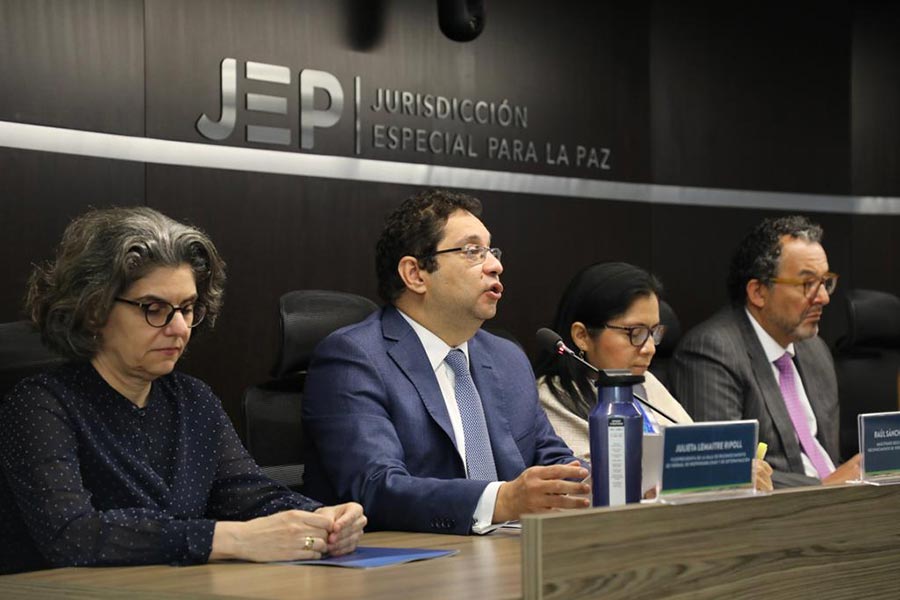
Environmental destruction as a war crime
One of the priorities for the JEP with its regional cases is to highlight how not only communities were victims, but also their territories and the ecosystems they harbour. Although this indictment doesn’t develop the idea in much depth, it does detail for the first time in a judicial setting the effects of FARC on some of the most sensitive ecosystems in Colombia, the second most biodiverse country in the world.
The rebels, argues the JEP, "had an ambiguous attitude that ended up generating serious damage to the environment due to their conduct, permissive in some cases and direct in others, with human acts that broke the environmental balance of the region”. It exemplified this, on the one hand, with the damage to the paramos (moors), a high mountain ecosystem that only exists in a handful of tropical countries and is strategic for its water richness, recounting how the guerrillas mowed down its vegetation - especially the emblematic friar plants - to set up their camps or plant landmines to stop the army's advances. And on the other hand, for promoting the expansion of illegal mining and the clearing of forests to grow coca, marijuana and poppy. For all these reasons, it described its environmental destruction as a war crime.
An illustrative transitional justice
On a whole, the JEP’s first territorial indictment is illustrative of how many corners of the Colombian countryside experienced the armed conflict.
By criminalizing displacement as a war crime and the forced transfer of population as a crime against humanity, it became the first judicial decision of the transitional justice system that deals with the most widespread crime in the country and, therefore, one of the most emblematic - one that touched 8.2 million persons or one in six Colombians. It’s also one that the JEP had not prioritized until now, just as it hadn’t focused on intentional attacks against the civilian population or landmine use.
In addition to documenting crimes that had been orphaned, this case clearly reconstructs how they interact with each other. For example, many village sieges were so deadly because of the indiscriminate use of ‘tatuco’ rockets and gas cylinders, two explosive devices that FARC manufactured in an artisanal manner and despite a very low precision that they chose to ignore. Or how they used to plant landmines, also manufactured by them despite being banned by the Ottawa Convention since 1999, to keep communities confined.
In some cases, crimes generated a vicious cycle of victimization. Frequent attacks on prosecutors and judges in these municipalities meant that it was virtually impossible to file a complaint against FARC or access justice, generating - in the JEP’s words - "a law of silence." "Impunity was so widespread that when exceptionally some member of the military units (...) was captured (generally for rebellion and storage and manufacture of explosive devices), he returned a few years later to the area where he used to operate," the tribunal established, documenting how several of the former guerrillas appearing before it had benefited from this lack of administration of justice.
Shortcomings
But the decision also leaves several questions open. It is unclear how it interacts with the JEP case on the recruitment of minors, which is further behind because of a cascade of legal challenges by former FARC members against the judge who led it and his subsequent resignation. And although it is clear why the indictment omitted to talk about kidnappings, whose case is more advanced and will be the first to see sanctions, it is less understandable why it avoided tackling sexual violence, which has no case of its own.
There is also no clarity on the sequence that follows in this case in terms of identifying those responsible, unlike the two previous cases in which it was explicit. The kidnapping case started with FARC’s Secretariat to then focus on to its regional blocs, while the false positive case started in six sub-regions and now moves up to the national command of the Army, which may have ordered or prevented them.
Three dissenting opinions underscore internal cracks
Beyond the questions about whether it will continue upwards or towards other actors, the publication of this indictment also underscores the existence of an arduous debate within the JEP regarding territorial cases. Unlike what happened in previous indictments, three of the seven Recognition Chamber magistrates filed partial dissenting opinions in which they disputed the indictment’s methodology and some of its conclusions.
The one that generated the most noise was the legal qualification of environmental damages in a non-international armed conflict as a war crime. Julieta Lemaitre, the justice in charge of the kidnapping case, defended that the indictment "makes a careful and well-intentioned analysis of environmental degradation" and Catalina Díaz, in charge of the false positives case, highlighted that "it provides a solid basis for designing reparation and restoration measures that take into account the complexity of the effects on nature". But both pointed out that the indictment fails to prove that there are serious, extensive and lasting damages, that the defendants were directly responsible for them and that they did so through conduct in violation of international humanitarian law.
In turn, justice Lily Rueda reproached it for having omitted sexual violence and for its "deficiencies" in the analysis of the recruitment of minors, the very case she handles. "It doesn’t provide an account of how recruitment occurred in this territory and doesn’t flesh out the patterns in which this behaviour occurred," she wrote. Finally, Lemaitre regretted that - in an institution with limited human resources and 10 years to bring charges - it has taken so long for this first decision. In her words, "it is clear that there will be no further final results before 10 years have passed, since five years have already passed and the only product is the indictment of two of six FARC structures that operated in the zone, and not even for all the crimes committed".
Beyond these legal controversies that will surely continue and its dry prose, the first regional case reconstructs many crimes that the JEP had not addressed until now, using countless quotes from victims' reports and incorporating many former rebels’ explicit admissions about them. And it acknowledges the painful ordeal of thousands of victims in the more rural Colombia.


